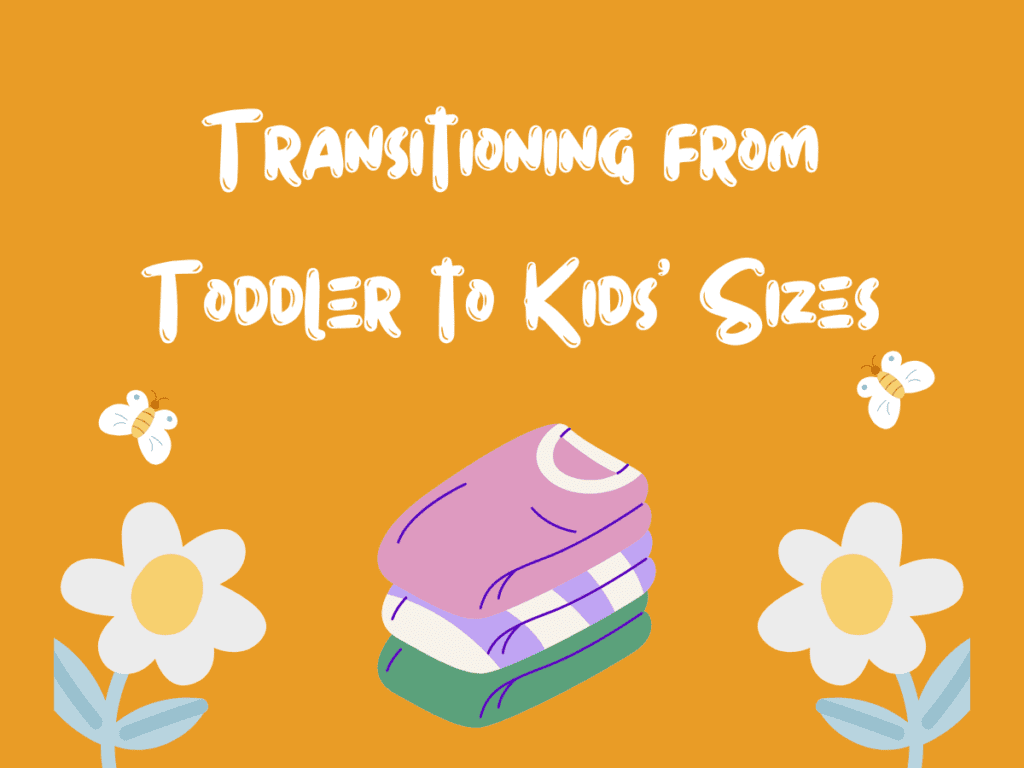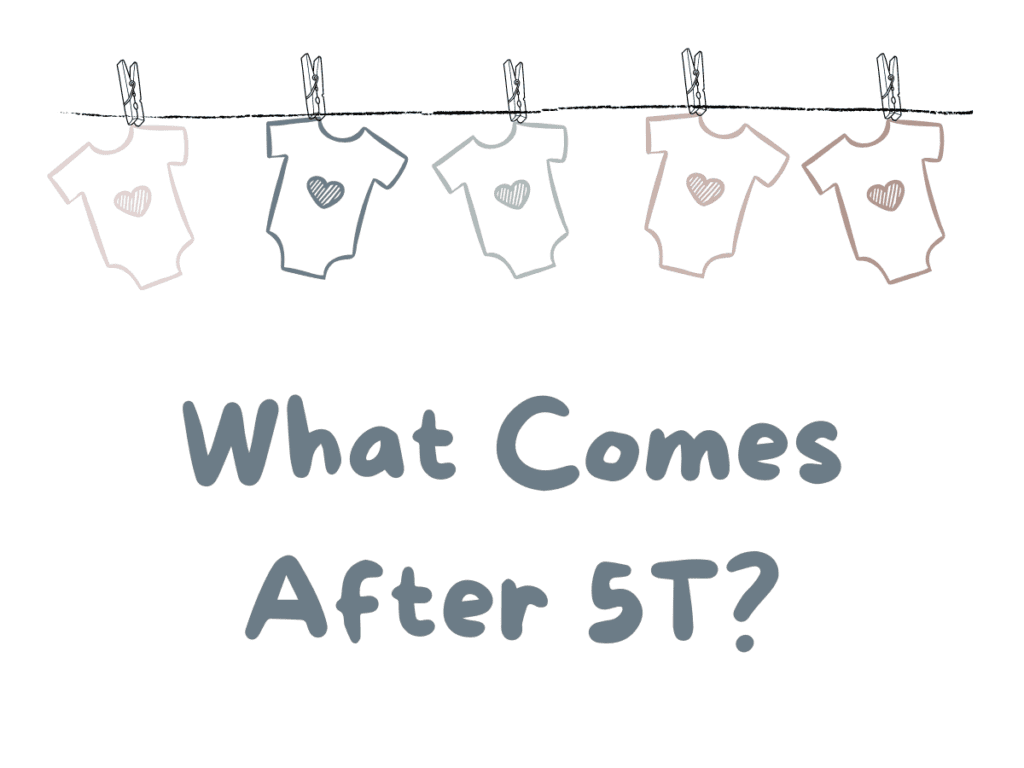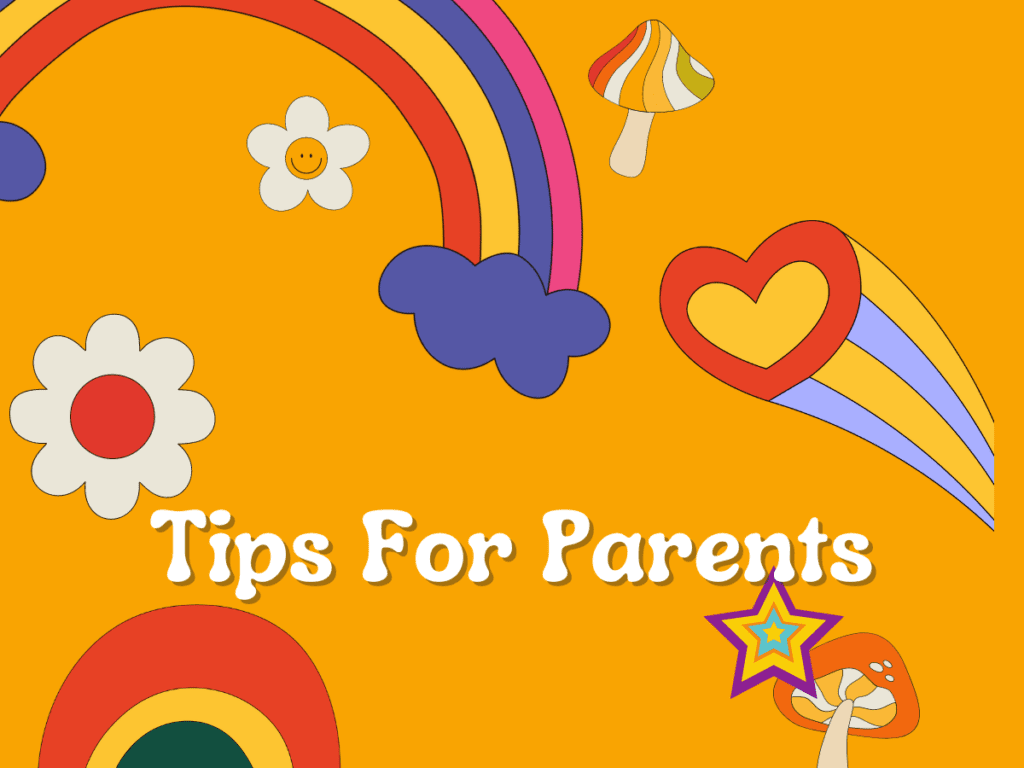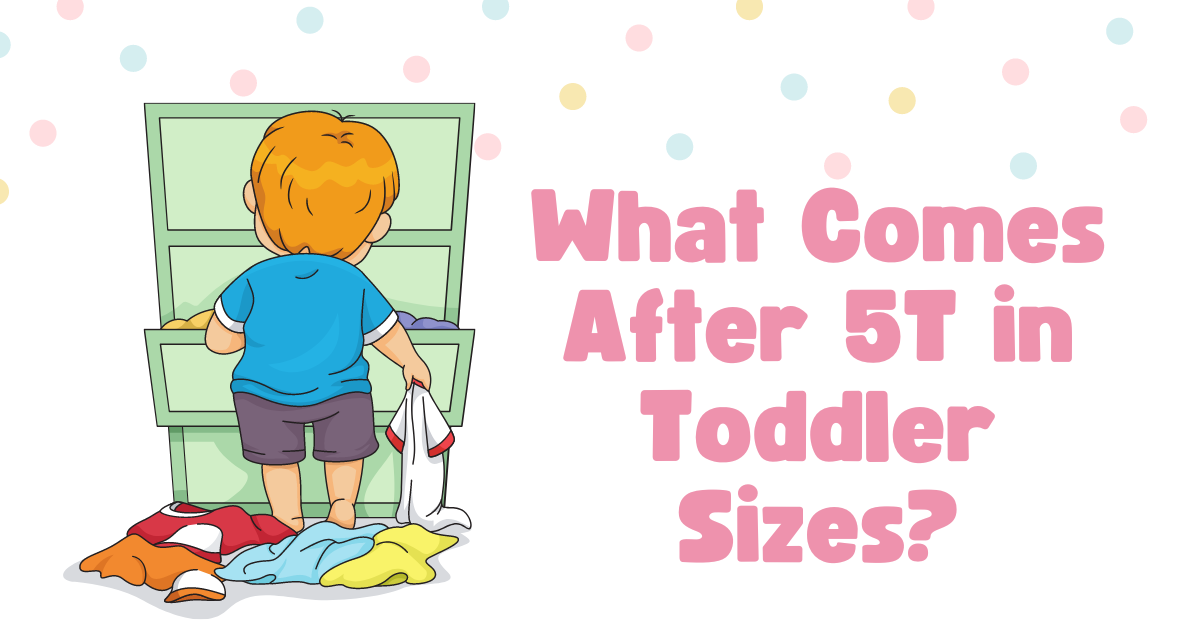Table of Contents
Every parent knows the bittersweet feeling of watching their child outgrow their clothes. As children grow, their clothing sizes change rapidly, particularly during the toddler years. This period is marked by tremendous growth and development, necessitating frequent wardrobe updates. For many, understanding the progression of toddler sizes is crucial, not just for the sake of clothing, but also as a marker of their child’s development.
Guide To Toddler Sizes
Sizing toddler clothing is, admittedly, a bit perplexing for the uninitiated. But once you grasp the basics, it’s easier to navigate. The “T” in toddler sizes stands for “Toddler,” which is an age group typically ranging from 18 months to about 5 years old. Sizes like 2T, 3T, 4T, and 5T correspond to both the age and general size of the child, with the higher numbers signifying larger sizes. For instance:
- 2T: Generally fits children 2-3 years old, weighing around 25-30 pounds.
- 3T: Generally fits children 2.5-4 years old, weighing around 30-35 pounds.
- 4T: Generally fits children 3.5-5 years old, weighing around 35-40 pounds.
- 5T: Generally fits children 4.5-5 years old, weighing around 40-45 pounds.
These are general guidelines, of course. Each child is unique, and fit can vary based on brand, style, and individual growth patterns. It’s always best to consult specific brand size charts or even better, try on the clothes whenever possible.

Transitioning from Toddler to Kids’ Sizes
As your child starts to approach the upper limit of the toddler size range, you might find yourself wondering about the next sartorial step. The progression isn’t as linear as simply moving from one number to the next, and this transition phase is where many parents find themselves in a bit of a sizing quandary.
After the 5T size, clothing for children typically moves into the realm of “kids’” or “youth” sizes. This range often starts at size 6, followed by 7, 8, and so on, going up to size 12 or even higher, depending on the brand. Notably absent is the “T” designation, which is a clear indicator that we’ve moved past the toddler phase.
What’s more, some brands may introduce intermediary or half sizes, like 6X, to accommodate the variances in growth during these years. Others might start using designations like XS (extra small), S (small), M (medium), and so on, aligning more with adult sizing conventions but scaled down for children.
While the change might sound simple, there are notable differences in design and fit. Kid sizes take into account a slightly different body shape, as children in this age group are less “toddler-like” and more “miniature adult-like”. For instance:
- Length: Kids’ clothes are generally longer, reflecting the fact that children’s limbs grow rapidly during this period.
- Shape: The cut is a bit less rounded than toddler sizes. Whereas toddler clothes often accommodate for diapers, kids’ sizes assume that the child is fully potty-trained.
- Design and Features: Expect fewer snaps, larger buttons, and designs that might appeal to slightly older sensibilities.
For parents, this transition is more than just a sizing change; it’s a reflection of their child’s journey from being a toddler to a young child, with all the growth and development milestones that come with it.

What Comes After 5T?
The big question many parents face as their child nears the end of the toddler size spectrum is: “What’s next?” While growth varies for each child, there are standard sizes that typically follow 5T in most children’s clothing brands.
- Size 6: Often the immediate successor to 5T, size 6 is the gateway into the kids’ clothing section. It’s typically designed for children aged 5 to 6 years old. It’s a noticeable leap from the previous size, accommodating the growth spurts common in these years.
- Size 6X (in some brands): Before jumping to size 7, some brands offer a 6X size. This is a slightly larger version of size 6, providing a middle ground for children who aren’t quite ready for a size 7.
- Beyond Size 6: After size 6 or 6X, you’ll find subsequent numbers like 7, 8, and so on. These sizes usually go up annually, corresponding with age, but remember: sizing is not a perfect science, and children grow at different rates.
- Alternative Labeling: As mentioned earlier, some brands transition into lettered sizes like XS, S, M, etc., post-5T. Typically, XS is the equivalent to size 6 or 6/7 in many brands, but it’s essential to always check the specific brand’s size chart.
Brands and Variation: One of the complexities in children’s clothing is the variation between brands. A size 6 in one brand might fit more like a 6X in another. Additionally, some brands may cater to slimmer or huskier builds, so it’s always wise to:
- Check brand-specific size charts: These are invaluable tools. Brands often provide height, weight, and other measurements to guide your choices.
- Read reviews: Other parents’ experiences can provide insights on how the clothing fits, whether it runs large, small, or true to size.
- Purchase from stores with good return policies: Especially during this transitional phase, having the flexibility to exchange sizes can be a lifesaver.
Things to Consider When Moving from 5T
Transitioning from toddler to kids’ sizes is not just a matter of choosing the next number or label on a rack. It involves a more nuanced understanding of various factors to ensure your child is comfortable, the clothes are functional, and your investments are worthwhile. Here are some key aspects to consider:
- Physical Growth of the Child:
- Height and Length: Not all children grow uniformly. Some may have longer limbs earlier on, necessitating a move to larger sizes primarily for length rather than overall fit.
- Weight: Some clothes, especially pants, might be labelled with weight recommendations. This can be a helpful guideline, but always consider how the weight is distributed (e.g., a child with a slender waist but muscular legs).
- Body Proportions: As children grow, their proportions change. For instance, their torso might lengthen, requiring longer tops.
- Fit Preferences: Just like adults, children have fit preferences. Some might prefer looser clothing, while others might like a snugger fit. Observing how your child responds to different fits can guide your purchases.
- Differences in Fit and Style Between Toddler and Kids’ Clothes:
- Waistbands: As mentioned earlier, toddler sizes often account for diapers. Moving to kids’ sizes might mean adjusting to different waistbands, especially if your child is recently potty-trained.
- Closure Mechanisms: Zippers, buttons, and other closures can differ between toddler and kids’ sizes. Ensure that they are manageable for your child’s level of dexterity.
- Design Elements: Designs tend to mature slightly as you move from toddler to kids’ ranges. Make sure the styles align with what your child likes and feels confident in.
- Availability of Designs and Types of Clothes: Sometimes, specific designs or types of clothes (like certain character-themed attire) might be limited to toddler sizes. Preparing your child for this change can help manage expectations.
- Material and Comfort: As always, the material plays a crucial role. Children’s skin can be sensitive, so ensuring that the fabric is soft, breathable, and suitable for their skin type is vital. Also, consider the care instructions; some materials might be less durable or require special care.

Tips for Parents and Caregivers
Transitioning your child from one size range to another can be a blend of excitement and challenge. As you mark this new phase in their growth, consider these practical tips to make the process smoother and more enjoyable for both of you:
- Keep Measurements Handy: Children grow unpredictably. Regularly update their measurements – height, waist, chest, and hip. Having these on hand, especially when shopping online, can be invaluable.
- Prioritize Comfort: It might be tempting to buy that stylish shirt or dress, but if it’s not comfortable, your child is less likely to wear it. Look for soft seams, stretchy materials, and breathable fabrics.
- Involve Your Child: As children grow, they develop a sense of style and preference. Involving them in shopping decisions not only empowers them but also ensures they’ll be happier with the choices.
- Try Before You Buy: If shopping in-store, use the fitting rooms. If shopping online, consider brands with good return policies. Fit can vary even within brands, depending on the clothing style.
- Invest in Staples First: Before buying the entire kids’ section, start with essential items like jeans, tees, and comfortable shoes. Once you’re confident about the sizes, you can expand to other items.
- Check Washing Instructions: Kids are notorious for stains and spills. Ensure that the clothes you buy are durable and easy to clean. Pre-shrunk materials can also prevent surprises after the first wash.
- Connect with Other Parents: Sharing experiences and tips with other parents can provide insights on brands, sizing quirks, and good deals. Consider joining local parent groups or online forums.
- Be Flexible: Sometimes, a size 6 shirt might fit perfectly, while size 6 pants are too long. Mix and match sizes if needed. Children’s growth isn’t always proportional.
- Celebrate the Milestone: Growing out of toddler sizes is a big deal! Make it fun. Perhaps let your child pick a special outfit in their new size or take photos to commemorate the moment.
- Stay Organized: As you phase out the 5T clothes, consider organizing and storing them (especially if you plan on having more children) or donating them to local charities.
Popular Brands and Their Sizing Charts
When transitioning from toddler to kids’ sizes, the plethora of brands available can be both a blessing and a challenge. While it’s impossible to cover every brand’s specific sizing, here’s an overview of some popular children’s clothing brands and a brief note on their post-5T sizing conventions:
- Carter’s:
- Post-5T: Carter’s typically progresses from 5T to kid sizes starting with 4/5 (XS) and then 6/6X (S).
- Note: Their size charts provide weight and height guidelines, making it easier to find the right fit.
- Gap Kids:
- Post-5T: After 5T, Gap moves to sizes like XS (4-5), S (6-7), and so on.
- Note: Gap often offers adjustable waistbands in their pants, which can be beneficial for growing kids.
- OshKosh B’gosh:
- Post-5T: Similar to Carter’s, the progression is from 5T to 4/5 (XS), then 6/6X (S), and upwards.
- Note: Known for their durable denim, their jeans might run slightly longer.
- Old Navy:
- Post-5T: Old Navy’s kids’ section starts with XS (5), S (6-7), and continues upwards.
- Note: Old Navy and Gap are under the same parent company, so their sizing is relatively similar, but always double-check.
- The Children’s Place:
- Post-5T: They transition from 5T to size M (7-8). However, they also have size 6, which can be a direct step-up from 5T.
- Note: They frequently have sales, making it an affordable option for rapidly growing kids.
- Gymboree:
- Post-5T: Gymboree typically starts with size XS (4-5) and progresses to S (5-6) and then M (7-8).
- Note: With fun and vibrant designs, their clothing often appeals to younger children transitioning from toddler themes.
Brand-Specific Quirks:
- It’s essential to be aware that brands might have unique naming conventions or offer “slim” or “plus” variations.
- Some brands, especially boutique or international ones, might use different sizing standards. Always consult their specific size charts.
Final Thoughts On What Comes Next After 5T Toddler Sizes
Navigating the journey from toddler to kids’ sizes is a significant milestone in your child’s life. It marks the transition from the early years of rapid growth and change to a phase of more consistent growth, both physically and emotionally. As parents and caregivers, it’s a moment of pride, a touch of nostalgia, and an opportunity for new memories.
Key Takeaways:
- Size Matters, But It’s Not Everything: While getting the right fit is essential for comfort, remember that each child is unique. What works for one might not work for another. Always prioritize your child’s comfort and happiness.
- Engage and Empower: Let your child have a say in their clothing choices. It not only fosters independence but also makes for a fun shared experience.
- Stay Informed and Flexible: Brands, styles, and sizes will vary. Arm yourself with knowledge, consult size charts, read reviews, and be prepared to make exchanges when necessary.
- Cherish the Moments: This phase, like all others, is fleeting. Celebrate the growth, capture the memories, and enjoy the journey.

